Part 1 of a 2 part post.
RUD has a long pedigree of manufacturing chains for over 140 years including 40 years in lifting technology and load securing. When it comes to lifting, securing, or lashing, the world looks to RUD which offers over 700 different lifting and lashing points for all requirements across mining, quarries, transport, and infrastructure.
All RUD lifting and load securing products are made in Germany. Many of the standards used in the lifting and load securing industry originated from RUD, such as the inspection stamp H1 for high strength chains in 1953, approval for Grade 8 (H1-8) in 1972 and approval for Grade 12 (D1-12) for round steel chains in 2007.
What is a Lifting Point?
A lifting point is the part which connects the load with the lifting device (such as a crane) to lift, turn, rotate, and move cargo. Lifting points are attached with hooks, shackles, and other connecting elements.
Different types of lifting points
Lifting points come in boltable and weldable options and all RUD lifting points are designed for a dynamic load of 20,000 load cycles.
Boltable Lifting Points
Boltable lifting points are used generally to lift loads. Because they are bolted, they are flexible and can be used in applications which require installation and removal when required.
Examples of Boltable Lifting Points are VLBG-PLUS, ACP-TURNADO, VRS-F STARPOINT, etc.
The advantages of Boltable Lifting Points:
Boltable lifting points also come in rotating and swivel options where the lifting point swivels in the direction of the load to offer additional flexibility and safety.
Weldable Lifting Points
Weldable lifting points are used when there is a requirement for a permanent connection on the load. These are permanently welded to the load for rotating and turning.
Examples of Weldable Lifting Points are VLBS, ABA, etc.
The advantages of Weldable Lifting Points:
Weldable lifting points also come in rigid options where the direction cannot be changed and hence used in single leg lifts.
What do I need to consider when using lifting points?
Continued into Part 2 for the TOP 5 LIFTING & LASHING POINTS from RUD …
Article copyright to RUD, this information is accurate at the time of publication and RUD Australia takes no responsibility for any errors inadvertent or otherwise.
If you want to know how the team at RUD can help you, please call 07 3809 1300 or fill out a form here.
Sources:

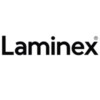
We are happy to deal with RUD because of their product quality, customer service and competitive pricing. They are very efficient when submitting quotes with a short lead time and are always available when we need them.
Onsite support is excellent and always professional.

RUD Chains has a great product with an exceptional back-up and field service. We have previously bought from Chinese manufacturers and European companies, but we will stay with RUD due to the quality of the product and availability of service personnel.

Patterson Crane Hire loves a challenge and RUD lifting gear helps us solve these challenges. The weight saving gains when we use their Grade 120 ICE range really makes a difference and minimises our risk when we are managing difficult, heavy lifts.
Simply put, this is why we choose to work with quality suppliers like RUD.

At Holcim (Werribee) we rely on RUD Tyre Protection Chains. Their strong expertise and professionalism is on display when they fit and maintain our chains on site. The team works hard to keep us safe, enable our machines to stay in operation and minimise our costs.
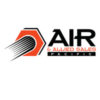
Air & Allied Sales (Pacific) has partnered with RUD Chains for the past 25 years to deliver outstanding engineered solutions. The professional and continued relationship with Ian and his team allows us to continue to support our customers above and beyond their needs.
Our recent requirements have pushed the limits of a standard supplier’s capabilities, but RUD Chains have never...
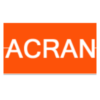
As Managing Director of ACRAN, we are always excited to provide innovative and quality technical solutions to the market for industrial ventilation, filtration and noise control solutions.
Recently we completed a project where RUD chain drives provided a controlled drive solution for an Engineered lift and fulfilled the requirements. ACRAN is grateful for the technical and on-site...
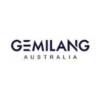
At Gemilang, we’re confident that our high-quality Endurequip-made Portalifts and vehicle stands will continue to serve us well as we build more buses for the Australian market. These provide us unparalleled underbody access, thereby giving our clients the reassurance that every single bus component, from top to bottom, is designed, manufactured, secured and inspected thoroughly by our...

The team at Jilalan appreciate the quality service you provided in the design, fabrication and commissioning of our platforms for our Wagon remediation project.
RUD's attention to detail and great communications skills ensured that our project was completed to the highest standard and exceeded our expectations. From the start of the procurement process you committed to ensuring time...
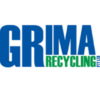
Grima Recycling have been working the team at RUD in realising our plant expansion project. The modular RUD chain conveyor has proved to be reliable and effective for the transfer of our recycled products from the loader hopper and up the inclined slop as part of our new process line. The regular contact and support provided by RUD compliments the RUD system quality.
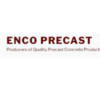
ENCO Precast have been involved with RUD for over 10 years now, predominantly for the supply of the Philipp Group Lifting Hoops for Prestressed Precast Concrete elements for bridges. The engineering support led by RUD's Engineering Manager Matt Pauli is always outstanding and has kept us loyal to RUD.
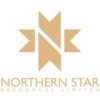
RUD’s service and product support have been excellent. We are happy to recommend RUD to anyone who has problems with their tyre life.